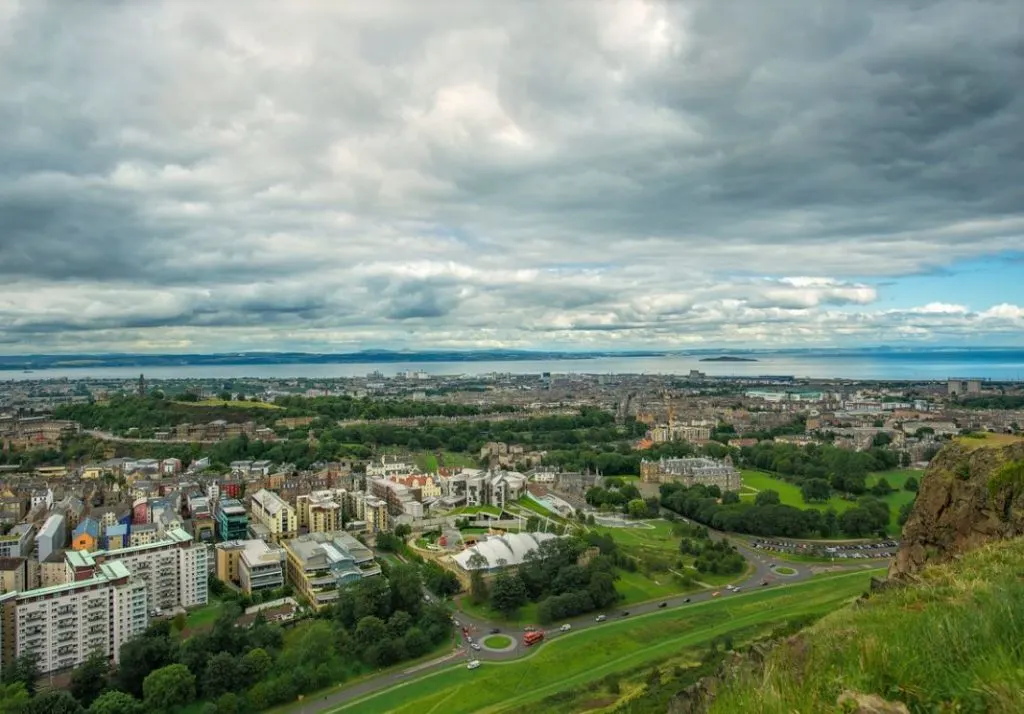The Palace of Holyroodhouse, often simply referred to as the Holyroodhouse, is one of the most remarkable landmark buildings in Edinburgh, the capital of Scotland.
One of the buildings on the site has a history dating back to the 12th century and the most prominent one is an amazing palace with a dual purpose that was built in the 17th century.
In this post, we’ll take a closer look at some interesting Holyrood Palace facts so you can learn all about this intriguing and important structure in the Scottish capital.
1. It’s situated on the opposite end of the city’s famous castle
The Holyrood Palace is located at the end of the main thoroughfare of the Old Town of Edinburgh referred to as the “Royal Mile.” The name of this series of streets was first coined in W. M. Gilbert’s “Edinburgh in the Nineteenth Century” (1901) for a particular reason.
That’s because on the opposite end of the Royal Mile we can find Edinburgh Castle, the famous landmark on Castle Rock which overlooks the city and which used to serve as a Royal residence.
Other famous landmarks that are located on the Royal Mile are the Scottish Parliament Building, a modern structure completed in 2004, and St. Giles’ Cathedral, a large Gothic church built during the Middle Ages.

2. It serves as the Royal Residence of the British Monarch
The Palace of Holyroodhouse serves as the official residence of the British monarch in Scotland. It has fulfilled this purpose since the 16th century and is currently used for state occasions and welcoming political and religious world leaders.
Some of the most important people in the world have been received at the palace, including but not limited to:
- Harald V of Norway in 1994
- Nelson Mandela in 1997
- Vladimir Putin in 2003
- Pope Benedict XVI in 2010
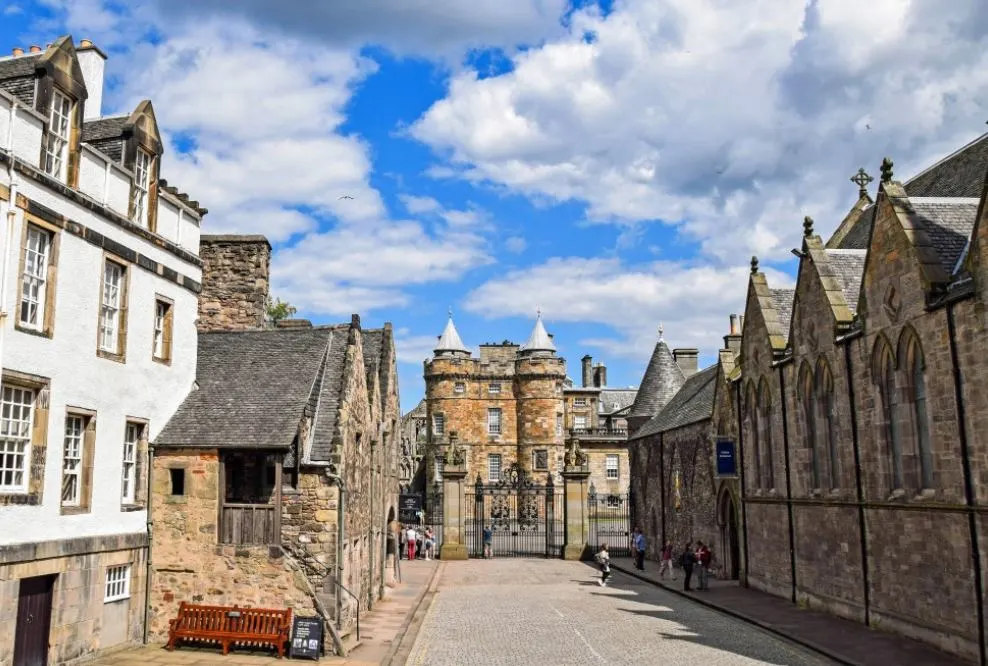
3. It’s open to the public except for one week of the year
Even though the palace is the property of the Crown, it’s open to the public throughout the year and is one of the most popular tourist attractions in Edinburgh.

There’s just one week in the year, at the beginning of each summer, that you will find the gates of the palace locked. That’s that time that the British monarch actually stays at the palace to conduct a variety of ceremonial purposes.
Apart from a locked gate, you can see the Scottish variant of the Royal Standard of the United Kingdom flying from the top of the roof when that’s the case.
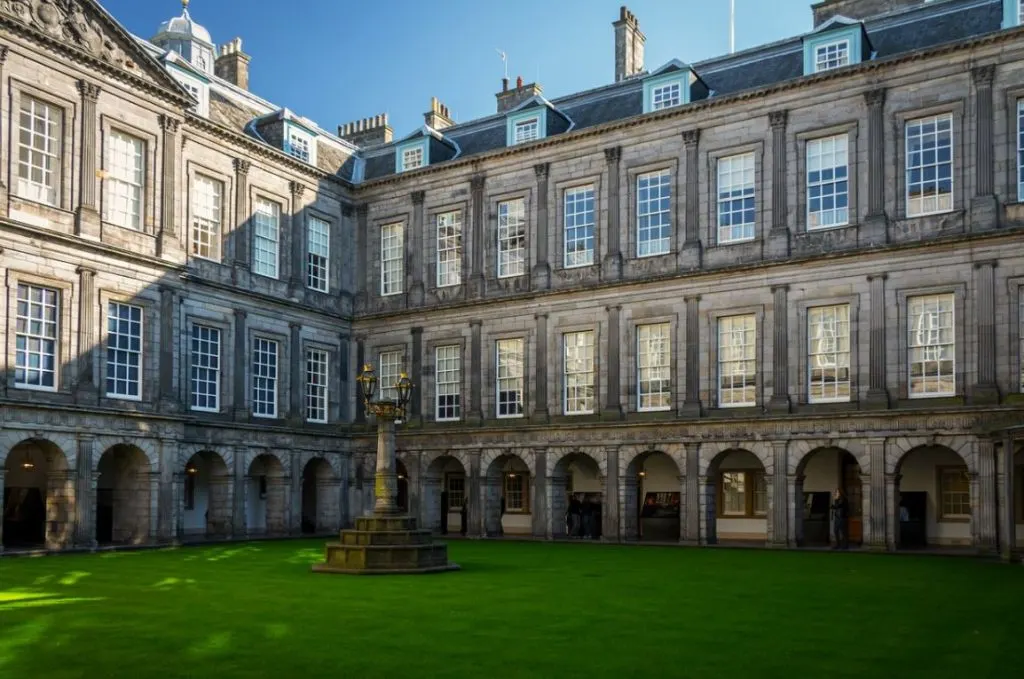
4. The Holyrood Abbey was constructed by King David I
The history of the palace is much older than the 16th century, though, because the first building on the site was built in the year 1128. This structure is the now ruined Augustinian Holyrood Abbey and was commissioned by King David I of Scotland.
David named the place Holyrood about a relic of the True Cross upon which Jesus Christ was crucified. This relic was owned by King David’s other, Queen Margaret, and was referred to as the “Holy Rood” or “Black Rood.”

5. It was an important venue between the 12th and 15th centuries
Because of its important location near Edinburgh Castle, which was the Royal Residence in the city during the Middle Ages, the abbey became an important structure as well. It was used for administrative purposes and welcoming important guests, kind of how it is used today as well!
Robert the Bruce (1274-1329) even held a parliament here in 1326 after which it was probably used as a royal residence. Both Kings David II and James II were buried at the abbey.
The marriage of James III and Margaret of Denmark took place here in 1469 and the guesthouse of the abbey served as the royal residence before the first version of the palace was constructed.
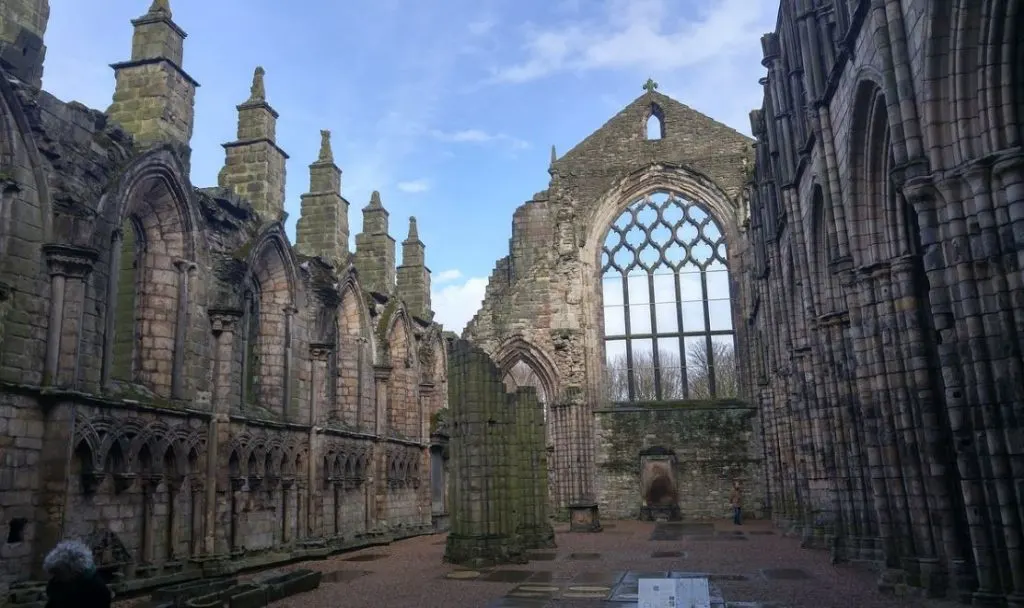
6. The original Gothic palace was built in the 16th century
The original version of the palace was commissioned by King James IV and was completed between 1501 and 1505. It was built right next to the abbey in the Gothic architectural style.
The Gothic palace featured a chapel, gallery, royal apartments, and a great hall and was most probably built because of his marriage with Margaret Tudor, an event that took place in the abbey in 1503. There’s hardly a better way to impress your new bride than to build a palace for her, right?
The palace was expanded by James V between 1528 and 1536. This project added additional royal apartments and included those in the northwest tower which are still present in the palace today!
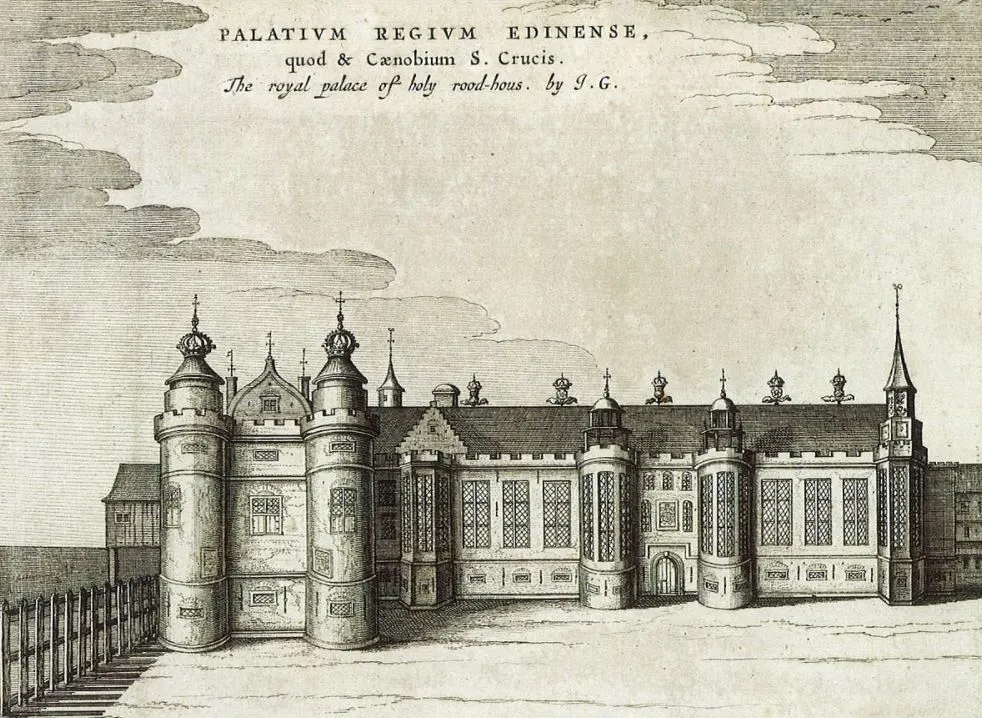
7. Mary, Queen of Scots, lived at the palace for 6 years in the 1560s
Mary I of Scotland, also known as Mary, Queen of Scots, or Mary Stuart, married the Dauphin of France in 1558 and was Queen consort of France from 1559 until the King’s death in December 1560.
She returned to Scotland shortly after and lived in the royal apartments of the northwest tower between 1561 and 1567, the year of her forced abdication.
One of the most remarkable Holyrood Palace facts is that she also married twice here during her 6-year stay. She married Henry Stewart, Lord Darnley, in 1565 in the chapel of the palace, and James Hepburn, 4th Earl of Bothwell, in 1567 in the Great Hall.

8. Mary witnessed the murder of an Italian courtier in her apartments
Shortly after marrying Lord Darnley in 1565, he became extremely jealous of Mary’s close relationship with her personal secretary, an Italian man named David Rizzio.
When rumors started spreading that he impregnated Mary, a conspiracy was conceived by Darnley and several Protestant nobles to murder Rizzio.
On the night of March 9, 1566, Mary was having dinner with Rizzio and several female courtiers. Darnley joined them and accused Mary of adultery. The men hiding nearby lashed out shortly after and stabbed Rizzio a total of 57 times.
This tragic event happened in the chambers of the northwest tower of Holyrood Palace.
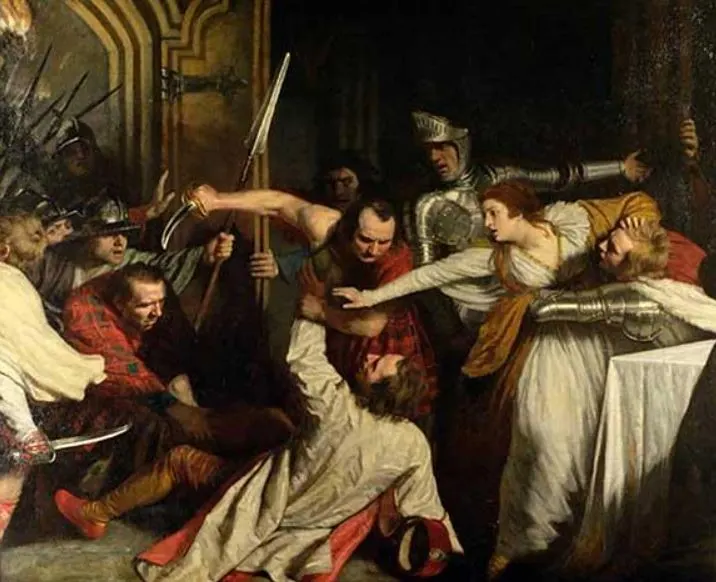
9. The current palace was constructed between 1671 and 1678
Plans to construct an amazing new palace were made in the 1660s and an initial survey was conducted in 1663. One of the architects of the palace was Sir William Bruce, a man described as the “effective funder of classical architecture in Scotland.”
He was joined by master stonemason Robert Mylne and £30,000 was reserved in 1670 for the construction of the immense palace.
This means that the palace cost to build the palace is the equivalent of over £6,800,000 today with inflation in mind!
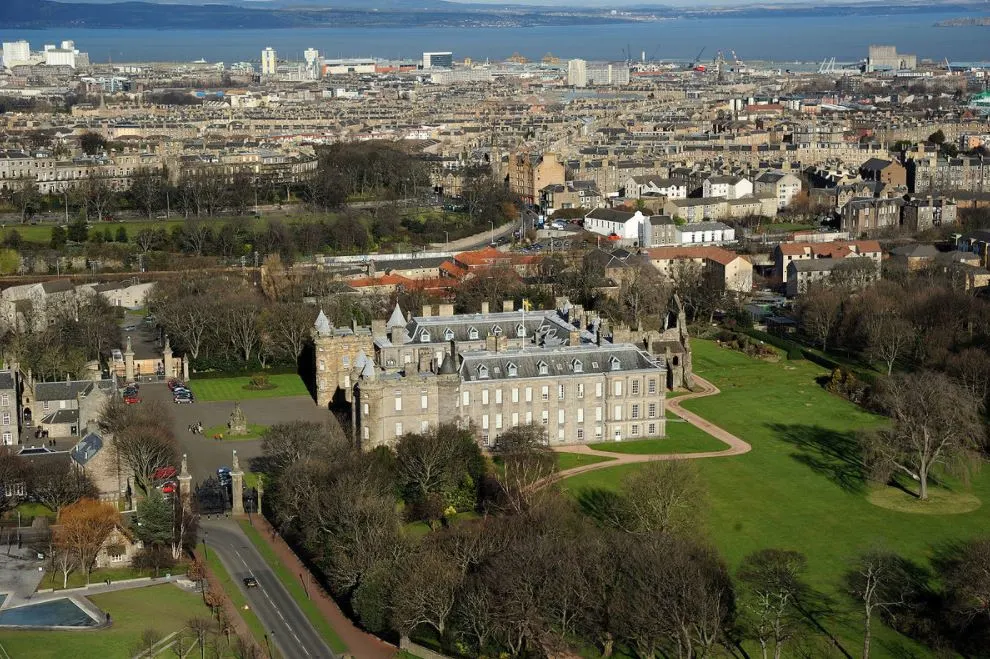
10. The palace has a quadrangle design and is bigger than you think
The construction of the palace started in the year 1671 and was completed in 1678. It was built in a quadrangle layout and to achieve this, they had to build a similar tower at the opposite end of the northwest tower that was part of the original Gothic palace and houses the original royal apartments.
One of the most interesting Holyrood Palace facts is that it’s also much bigger than it appears to be as the square shape measures 230 feet (70 meters) from north to south and the same length from east to west!

11. The largest room features 110 paintings of Scottish monarchs
One of the most amazing rooms in the palace is also the biggest and is referred to as the “Great Hall.” It’s situated in the western range of the building and links the King’s Closet with the former’s Queen’s apartments.
This immense space is elaborately decorated with a total of 110 portraits of Scottish Monarchs dating back to Fergus I who supposedly ruled around 330 B.C.
These paintings were created by Dutch Golden Age painter Jacob de Wet II, also known as “James de Witt.” He did an amazing job because he completed all of these between 1684 and 1686, shortly after the palace was completed.

12. The big garden is part of a much larger Royal park
The garden surrounding the palace covers an area of about 10 acres (4 hectares) but is in fact part of a much larger park referred to as “Holyrood Park” or “Queen’s or King’s Park.”
This park covers an area of 650 acres (260 hectares) and originally served as a royal hunting estate. One of the most famous features of this park is Arthur’s Seat, an extinct volcano and the highest point in Edinburgh at 823 feet (251 meters) above sea level.
This is also one of the best spots to get amazing views of both the palace and the city of Edinburgh!
